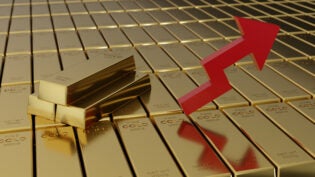
Traditional investment options, like stocks, bonds, and real estate, are the backbone of many a portfolio. But mixing in a dose of passion with your financial planning can possibly net you more financial gains down the line, using tools like Marketlog to monitor your stock portfolio to maximize returns.. That’s where unique collectibles stride in. Sports memorabilia and rare finds offer an intriguing pitch to diversify your investments. It’s not just about cashing in on nostalgia; it’s a strategic play that could level up your asset game.
In this article, we will unpack how these collectible pieces could complement your conventional investment strategy.
The Playbook of Unique Collectibles as Assets
Think of sports memorabilia and rare collectibles like a secret playbook in the investment game. These aren’t your usual stocks or bonds; they’re unique pieces, from signed baseballs to vintage comics, that can grow in value over time.
Their worth can climb based on how rare they are, their condition, and their place in history (such as a jersey from a legendary championship game). Remember, value spikes when there’s a great story or a big name attached to them.
Adding these cool collectibles to your investment mix means you’re not just building wealth; you’re also holding onto pieces of cultural history that might just score big financially.
 Image Source: Pixabay
Image Source: Pixabay
Strategies for Diversification with Collectibles
Adding collectibles to your investment lineup is like training a varied team; each player brings something different to the game. Here’s how you diversify smartly:
Know Your Field
Understanding the game first is key when diving into collectibles as investments. It’s like learning another language—you need to understand what makes an item valuable. Study up on the history, what collectors go for, and how to spot a fake from miles away. Networking with experts and joining collector communities can be your best move.
Diverse Within Diversification
Putting all your coins in one type of collectible isn’t wise; it’s a bit risky, like only investing in tech stocks. Mix it up! Try a combo—sports cards, autographed balls, even old concert posters—whatever floats your boat while giving you a layered defense against market shifts.
Condition and Authenticity
Here’s where the sharp eye comes in handy—the state of your collectible is huge when it comes to value (think mint condition). Also, make sure whatever you get has its authenticity certified; without that proof, it’s worth plummets like a rock in the water.
Understand Appreciation Factors for Collectibles
When it comes to collectibles, a few heavy hitters can really send their value soaring. The first is historical importance—a piece linked to a pivotal moment or figure in sports can attract serious attention (and dollars). It’s like owning a slice of history; the more significant the event or person, the bigger the potential payoff.
Then there’s rarity—items that are tough to find often create a buzz among collectors and can command top dollar. It’s simple supply and demand; fewer treasures out there mean more people might be willing to pay extra to get their hands on them.
Finally, consider the ‘halo effect’: winners tend to boost interest in related memorabilia. A player who takes home a championship or an athlete who lands in the Hall of Fame can elevate everything connected with them.
Timing Your Collectible Investments
Much like a coach calling the right play at the crucial moment, knowing when to buy or sell in sports card auctions or collector trades can make all the difference. It’s about being strategic: catching wind of retirement talks might signal it’s time to buy, while hall-of-fame inductions can mean it’s ripe to sell.
It takes practice to see these patterns, but with patience, you could spot trends that suggest an item’s value is on the rise. Keep an eye out for anniversaries and milestones—they often drive up interest and prices, too.
Remember that timing isn’t just about making gains; it’s also about minimizing losses. If market buzz is dying down for certain memorabilia types, consider whether holding on is really worth it. Sometimes, cutting loose before a decline is the wisest move on your investment playbook.
Navigate Memorabilia Investing with a Guarded Approach
Finally, dabble in the world of collectible investments, but tread with caution. The thrill of snagging that rare autographed jersey is undeniable, yet the arena is fraught with risks. Auctions are charged environments where excitement can override common sense, and you might end up paying more out of fervor than financial strategy.
Also, understand that this market is as unpredictable as a playoff game. Today’s hot-ticket item can cool down without warning if public interest shifts or if an athlete’s reputation takes a hit. And while scarcity and condition set the stage for value appreciation, they also make authenticating your finds crucial—buying a forgery is like throwing money to the wind.
1134 Views












